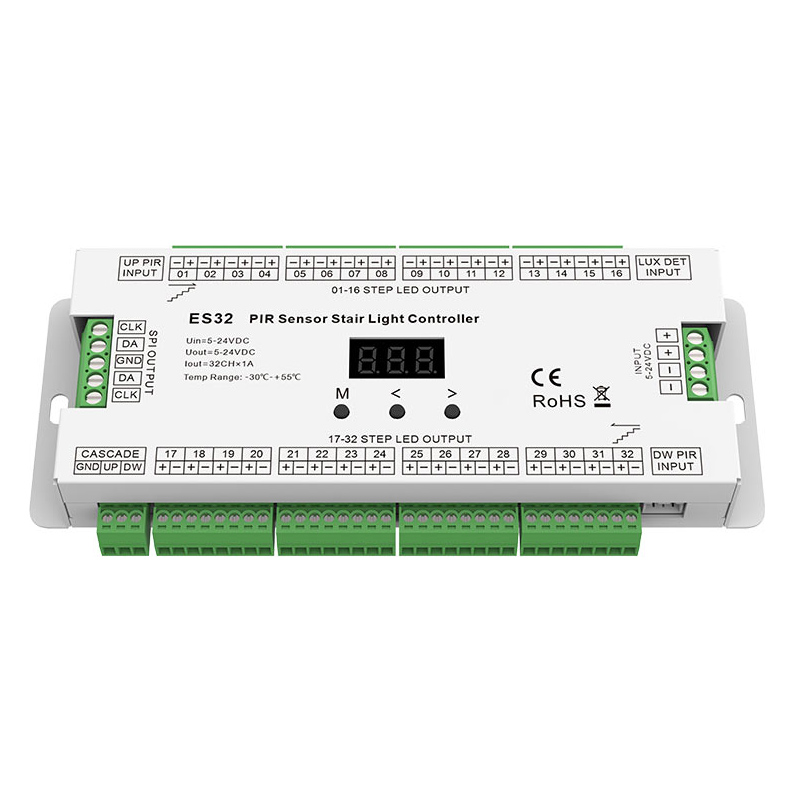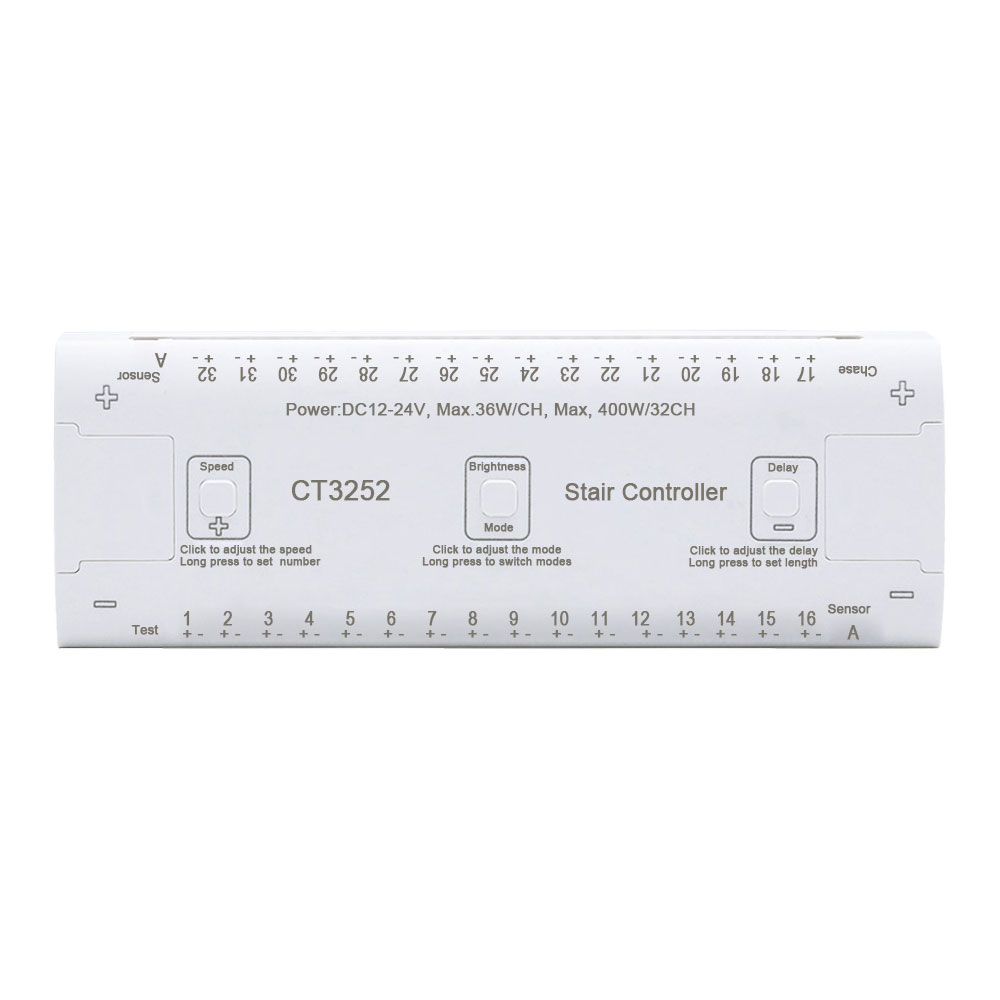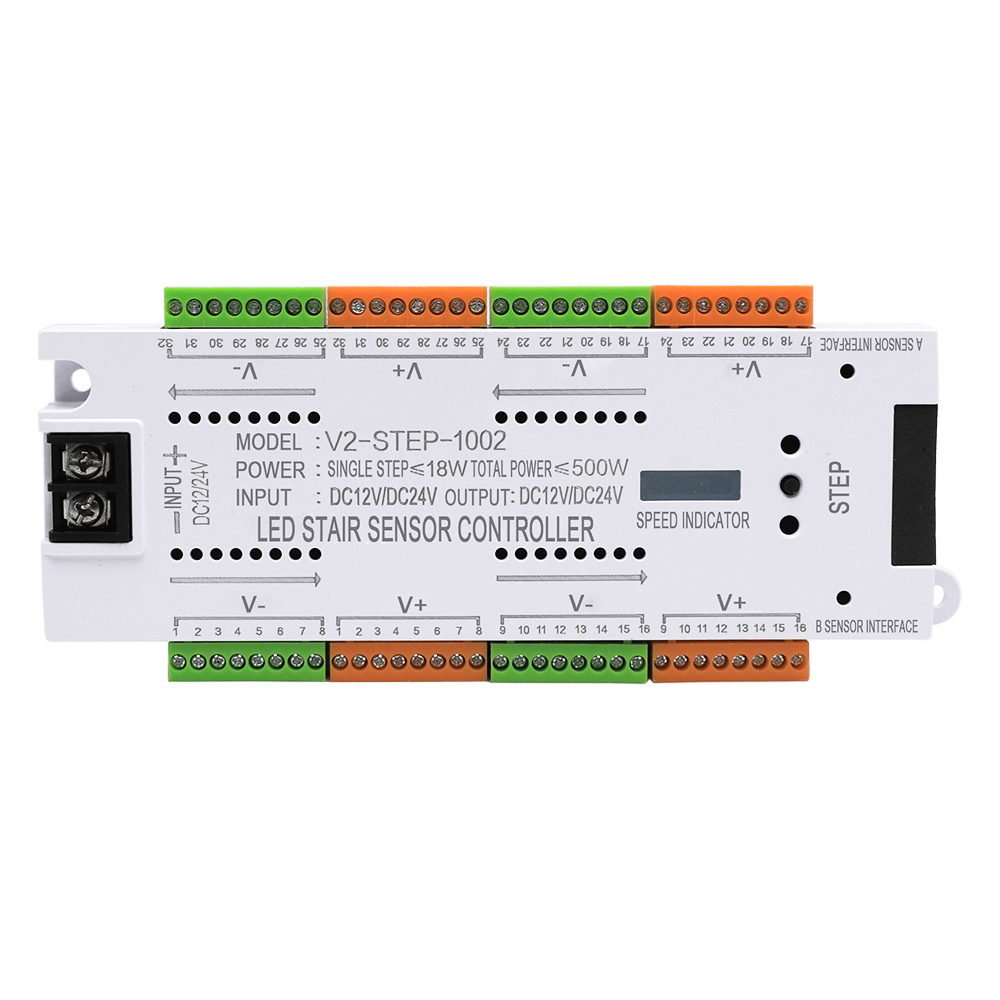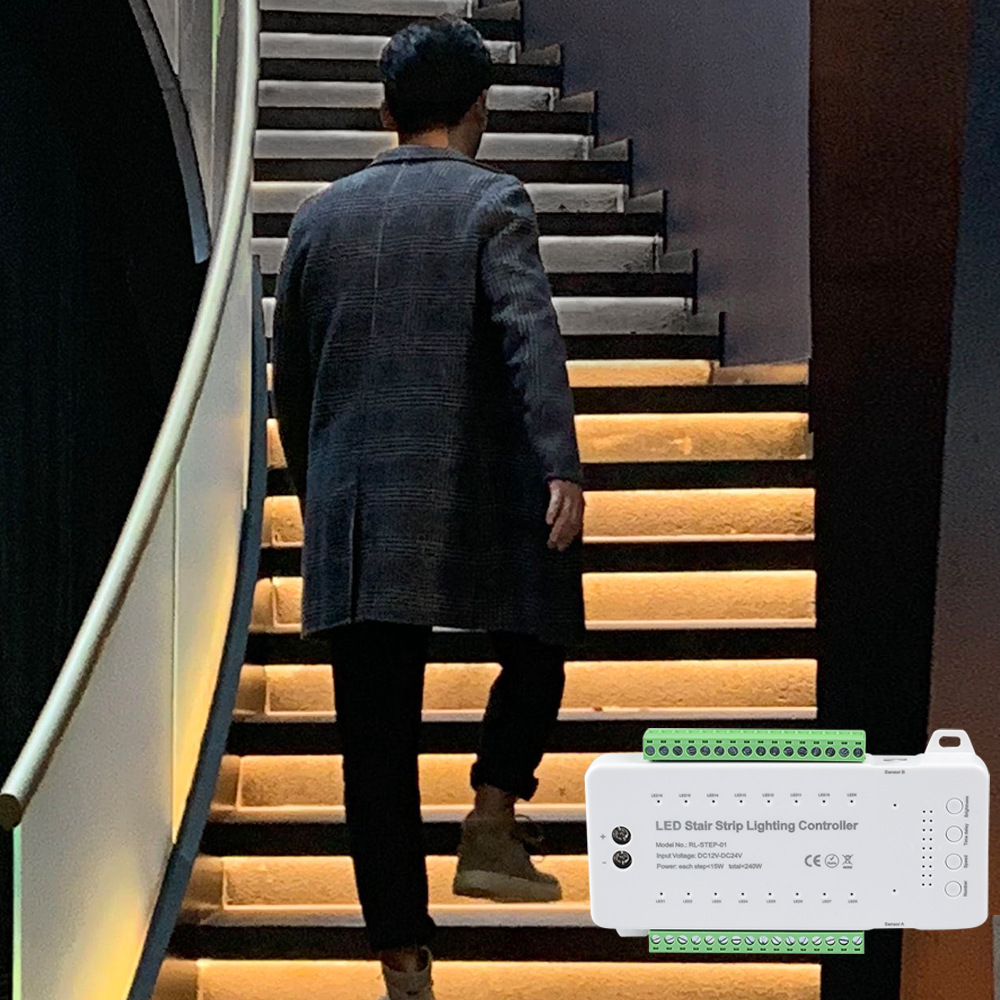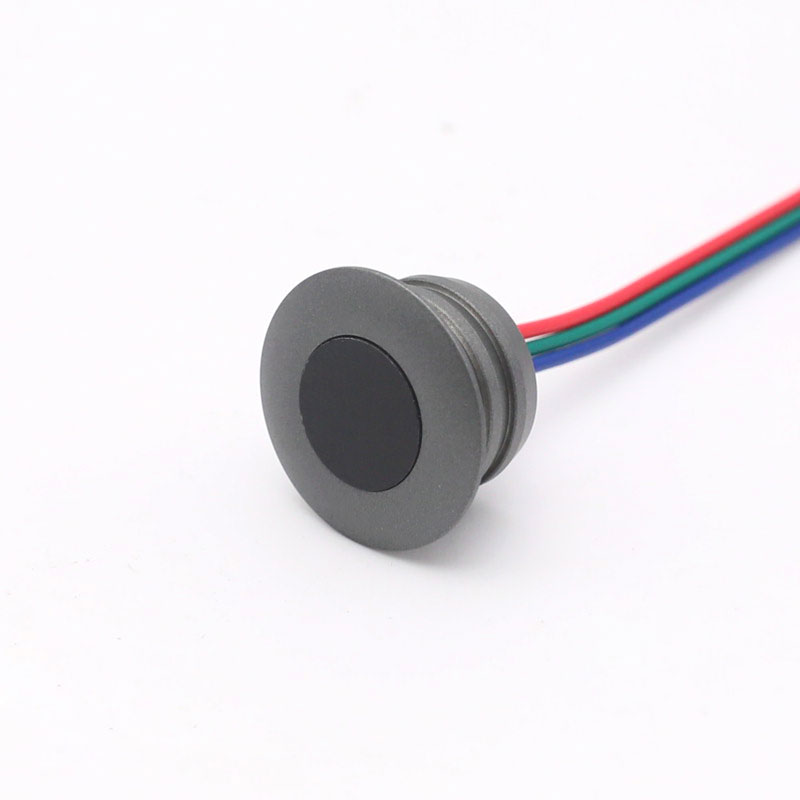LED Stair Lights Kit

Control LED Stairs Lights through Smart Sensing, Wireless Remote, Smartphone APP, Voice, there are SuperLightingLED Stairway Light Fixtures & Kits for Motion Sensor Stair Lighting, Wireless Staircase Lighting Inside and Outside. Whether you're looking for complete komigen stair lights led kits or individual led stair lighting controllers or stair led strip lights, you'll find the answer here.
LED motion sensor stair lights can automatically sense your movements when you walk into the sensing area of the PIR motion sensors, then the stairway lights will automatically turn on and then automatically turn off. You can DIY your own unique staircase lights effect through a stair light controller. Please watch our videos for more step lights effects.
Using LED strip lights to light up indoor and outdoor staircase is a popular way of stairwell lighting, it hides the LED strips under each stair step, which provides even lighting for the stair treades without ruining the look of the staircase, keeping it tidy and beautiful. We also provide anti-slip stair nosing profiles to hold your stair lighting strip for safety path lighting.
Get Your Automatic LED Stair Lighting Kit Now
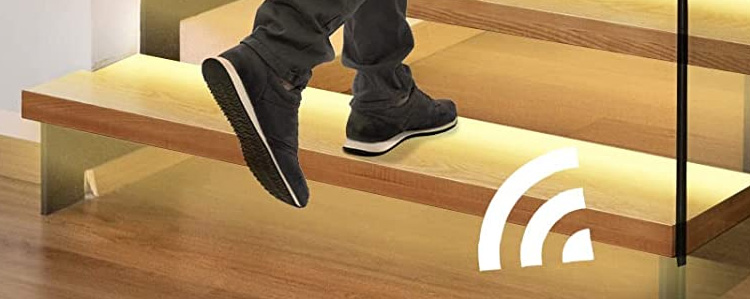
Motion Sensor Stair Tread Lighting
Motion activated stair lighting is an indoor stair lighting solution that is currently preferred by home users, and it allows for very intelligent control of stairs lights. Motion sensor indoor stair lights uses a PIR (Passive Infrared) sensor as the trigger device, when the human body enters the sensing range, the sensor head will capture the infrared radiation of the organism and automatically trigger the lights to come on. This automated control allows the motion sensor step lights to be turned on and off based entirely on people's activities, without the need for manual operation, which greatly improves the convenience of use.
The motion sensor light staircase system not only realizes on-demand lighting, but also enhances the user experience through smart home integration technology. It avoids unnecessary energy waste and meets the pursuit of energy saving and environmental protection in modern families. Long-term use can significantly reduce electricity expenses, while also reducing the impact on the environment.

Smart Home Staircase Lighting
Modern smart home staircase lighting allows the home stair lights to be turned on and off more at will, users could choose the most suitable control method according to their own habits and needs:
• Auto Sensing: Enhance the convenience of use and energy saving;• Handheld Remote Control: Control the on/off, brightness and color of the home stairs light anytime, anywhere;• Wireless Wall Panel: Convenient for users to easily operate the home decor stair case lights when entering the stairwells area;• APP Software: Through the application on the smartphone or tablet, you can remotely adjust the stairway light settings;• Voice Assistants: Integrated with Amazon Alexa, Google Assistant, Apple Siri and other integrations to control the stairway lights through voice commands for more natural and convenient operation.Smart home stair lighting system allows you to personalize settings to meet different usage scenarios and preferences, such as dimming the stair light, selecting the light color according to preference (for CCT, RGB, RGBW, RGBCCT), turning the light on or off automatically at a specific time, and linking with other smart devices.

Exterior Deck Outdoor Step Lights
At night and in dimly lit environments, the low visibility of stair steps on outdoor decks can easily lead to safety accidents such as trips and falls. Therefore, it is essential to use lights to illuminate your exterior stair steps. Deck step lighting not only provides adequate illumination but also enhances safety.
Light strips are an efficient solution for outdoor staircase lighting and are suitable for semi-outdoor scenes such as balconies, parapets and outdoor steps. Installed underneath or to the side of the steps, strip lights provide even illumination for each stair tread. It's also a good idea to use spotlights lighting up individual step for both energy efficiency and architectural aesthetics.
Outdoor step lights must be waterproof rated IP65 and above.

Accent Side Mount Stair Lighting
Install lights on the side of stair steps or side walls to extend and accentuate the stairway's step travel path....
Why Is Stairway Lighting So Important? The Perfect Blend of Safety And Aesthetics
Whether in residential buildings, office buildings, or shopping malls, staircases serve a crucial transportation function. Without proper lighting, stairwells become dimly lit. People may trip and fall due to inability to clearly see the height, width, and position of the steps, especially for the elderly, children, and those with mobility issues, where the risk is significantly heightened.
A well-lit staircase does more than prevent falls—it transforms the entire experience. Bright, even staircase lighting creates a sense of ease and confidence, while dim or uneven step lighting can trigger anxiety, discomfort, or even fear in isolated settings. Beyond safety, premium stairwell lighting elevates the aesthetic appeal of any space, enhancing architectural details and leaving a lasting impression on visitors.
Investing in high-quality staircase lighting means:
-
✔ Eliminating safety hazards – Say goodbye to shadows and tripping risks
-
✔ Enhancing comfort – Create a welcoming, stress-free environment
-
✔ Meeting emergency standards – Ensure reliable visibility during power outages
-
✔ Exceeding building codes – Comply with regulations while elevating design
| ✨ Shop our LED step lights now and transform your staircase into a safer, smarter, and more stunning focal point! |
A Comprehensive Guide to Staircase Lighting Fixtures: 4 Main Categories and Selection Tips
In staircase lighting design, the selection of lighting fixtures is crucial, as it not only affects the lighting effect but also impacts the safety and aesthetics of the entire space. Currently, there are a wide variety of mainstream light fixtures stairwell available, each with its own unique features, capable of meeting the needs of different scenarios and styles.
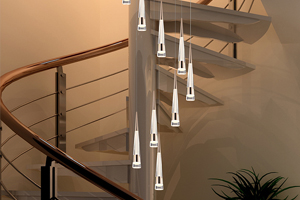 I. Ceiling-Mounted Lights & Pendant Lights
I. Ceiling-Mounted Lights & Pendant Lights
Ceiling lights are a traditional and common choice for stairwell lighting. They are fixed directly to the ceiling above the staircase, allowing light to spread widely and evenly across the entire stairwell space. For stairwells with high ceilings or larger spaces, decorative pendant lights, chandeliers, or crystal chandeliers can serve as eye-catching focal points, adding a touch of elegance and luxury. This is an excellent choice for residential spaces that prioritize artistic aesthetics.
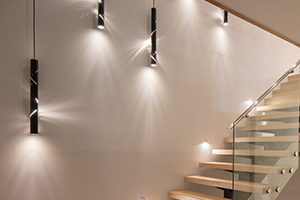 II. Wall Lights
II. Wall Lights
Wall lights are mounted on staircase walls and are commonly used in areas requiring enhanced accent lighting or decorative lighting. Installing wall lights in stairwells not only illuminates the stairs but also highlights decorative elements, giving the space a unique character.
III. Spotlights
Spotlights use small, precise light points to adorn and outline the contours of the steps. They typically feature recessed or surface-mounted designs with a small diameter and can be installed on the tread surface, step facade, or staircase side walls.
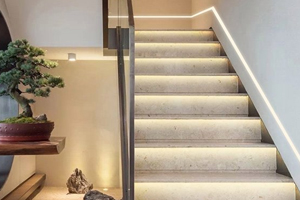 IV. LED Light Strips
IV. LED Light Strips
LED light strips are a popular choice for modern staircase lighting. They can be installed beneath stair treads, along step edges, or under handrails, providing visible light without the clutter of fixtures, creating a striking visual effect. Most notably, LED light strips offer customizable light colors, enabling the creation of various atmospheres such as different color temperatures of white light, adjustable white tones, color changes, and data-driven effects.
| ✨ Limited-time offer: Submit your staircase dimensions and style preferences to receive a FREE lighting design proposal! |
From Lighting Fixtures to Lighting Solutions: How to Choose the Right Stairwell Lighting Type Based on Your Needs?
After learning about the mainstream stairwell light fixtures (ceiling lights, wall lights, step lights, strip led lights, etc.), the next step is to choose the right lighting type based on your actual needs. Different combinations of lighting fixtures can create completely different stair lighting effects—from basic safety lighting to artistic ambiance creation, each solution has its optimal application scenario.
Before choosing a LED lighted staircase type, first clarify your core needs:
 Safety first or decoration first?
Safety first or decoration first?
| Safety-First Type | Art-First Type |
| Homes with the elderly or children, frequent use | Display spaces, low-frequency use staircases |
| ✅ Mandatory configuration: | ✅ Bonus features: |
|
• Step edge lighting (recessed step lights or LED strips under the steps) • Handrail auxiliary lighting (embedded LEDs or bottom light strips) • Illuminance requirement: ≥150 lux (measured at the center of the step surface) |
• Material highlight lighting (wall-washing lights on side walls to showcase stone/wood grain) • Dynamic lighting effects (RGBIC light strips programmed for flowing effects) • Decorative point light sources (artistic accents on walls/step sides) |
 Daytime and nighttime usage scenarios?
Daytime and nighttime usage scenarios?
| All-Day High-Frequency Use (e.g., main staircase in a residence) | Temporary Nighttime Use (e.g., basement/attic staircases) |
|
• Light-sensing automatic adjustment: no sensing during the day / sensing at night and in dim environments • Dual color temperature switching: 4000K in the morning to invigorate → 2700K at night to aid sleep |
• Human motion sensing control (microwave radar detection range > 2 meters / 120° PIR sensing angle ) • Single-color temperature night light (3000K / 1-3W low power consumption) |
 How staircase materials react to light?
How staircase materials react to light?
| Material Type | Lighting Tips | Common Mistakes | Rec. Light Source | Rec. Lighting Position |
| Wooden Stairs | Soft lighting to highlight the texture and feel of the wood | Overly intense light causes wood color distortion | LED strips, recessed spotlights | Under the treads, recessed in treads, side walls |
| Tile Staircase | Choose uniform lighting to avoid glare | Ignore the reflective properties of tiles to result in uneven light reflection, affecting visual appeal | LED strips, ceiling lights | Under treads, ceiling |
| Glass Treads | Use edge lighting strips to softly illuminate the glass steps | Spot light sources causes scattered light dots | LED Strips | Side of the treads, bottom of the handrails |
| Polished Stone Staircase (Marble / Granite) | Use diffuse lighting to avoid mirror glare | Direct light causes strong reflections | Diffused LED light strips | Under treads, side of the treads, side walls |
| Textured Stone Staircase (Sandstone / Slate) | Increase brightness by 20% to compensate for light absorption by rough surfaces | Ignore surface texture shadows | High-power LEDs | Under treads, side of the treads, side walls |
| Concrete Staircase | Use bright, direct lighting, preserve industrial texture | Excessive decoration undermines ruggedness | Aluminum channel light strips | Under treads, under handrails |
Ultimate Guide to Staircase Lighting Control: From Basics to Smart Systems
Staircase lighting control systems determine the response speed, energy efficiency of stair light, and user experience. With technological advancements, modern staircase lighting has evolved from simple switch controls to programmable smart systems.
Staircase light fixtures and control systems are like “hardware” and “software”—high-quality stairway light fixtures provide the basic lighting effects, while smart staircase control systems give them their soul.
1. Switch Control: A Simple and Reliable Traditional Option
Traditional light switches are the most basic and economical staircase lighting control solution. This control method uses mechanical switches or dual-control switches to turn lights on and off, suitable for locations with limited renovation budgets or no need for complex functions.
LED smart switch modules are a modern stairwell lighting control solution that uses microcontrollers and wireless communication technology to achieve intelligent lighting control. These stairway light switch modules typically support multiple control methods, including mobile apps, voice assistants, timer control, and scene modes.
LED smart switch modules are compatible with various types of LED stairwell lighting fixtures, offering flexible lighting control. For traditional high-voltage lighting systems, such as halogen or incandescent lights, smart switch modules typically use Triac technology. For low-voltage LED lighting fixtures, smart switch modules typically use DC control technology.

2. Motion Control: The First Step Toward Intelligence
Motion control is currently the most popular automation stairwell light solution, primarily divided into two technical types: PIR (passive infrared) and microwave radar.
PIR sensors detect infrared radiation emitted by the human body to trigger lighting, with a typical detection range of a 120° sector and a maximum distance of 5 meters, suitable for dry indoor environments.
Microwave radar utilizes the Doppler effect (the sensor emits microwaves and receives reflected signals), offering 360° omnidirectional detection capability with a detection range of up to 8 meters. It can penetrate non-metallic materials such as glass and wood, making it suitable for complex environments or staircases with metal structures.
- MR04-LBS Bluetooth Microwave Motion Sensor (ceiling recessed mount)
- EH-M Wireless RF / 0-10V Microwave Sensor (ceiling recessed mount)
- EH-M(WZ) Zigbee Wireless RF / 0-10V Microwave Sensor (ceiling recessed mount)
- EMR Wireless RF Microwave Sensor
- EM Microwave Sensor
More advanced presence detection (millimeter-wave) and occupancy detection technologies are based on continuous monitoring, enabling real-time detection of whether anyone is present in the stairwell. Unlike traditional motion detection, presence detection not only detects movement but also detects stationary human bodies. This technology typically combines multiple sensors, such as infrared sensors, microwave sensors, and sound sensors, to ensure more accurate detection results. It is particularly suitable for scenarios where elderly individuals may linger or rest.

It is worth noting that modern staircase lighting is moving toward integrated designs, with many products now featuring built-in motion sensors. This integrated design simplifies the installation process and is commonly found in:
-
Embedded step sensors
-
Smart handrail lighting systems
-
Ceiling-mounted presence sensors
For DIY enthusiasts or users with specific needs, standalone motion sensor controllers can be used to retrofit existing lighting fixtures or pair with desired lighting fixtures.
3. Intelligent Control Systems: The Future Direction
Wireless intelligent systems bring unprecedented flexibility to stair lighting. The three mainstream wireless protocols currently in use are Zigbee, Bluetooth, and WiFi.
Users can control the lights' on/off status, brightness, and color through smartphone apps, voice assistants, or smart switches. The system can also be set to include functions such as scheduled on/off times and scene modes.
4. Professional-Grade Solutions: The Choice For Large-Scale Projects
DALI digital lighting control is the preferred choice for commercial stair LED projects. A single DALI bus can control numerous devices, supporting seamless dimming from 0-100% and color switching, particularly suitable for large-scale staircase projects requiring centralized management.
For stairs applications requiring dynamic lighting effects, the DMX512 protocol is the professional choice. In decorative staircases of large public buildings, the DMX system can be programmed to present various themed lighting shows, enhancing the building's artistic expression.
In special environments such as museums or flammable / explosive areas, fiber optic lighting systems offer an ideal lighted staircase solution. This system separates the light source from the lighting points, transmitting light via fiber optics, completely eliminating electromagnetic interference and the risk of sparks.
How to Choose the Most Suitable Solution?
When selecting a control method for stair treads lights, multiple factors must be considered: budget, usage frequency, maintenance capabilities, and future expansion needs.
For ordinary households, it is recommended to start with a hybrid system combining motion sensors and wireless smart technology; commercial spaces are better suited for professional systems such as DALI or DMX; in special environments, safety must be prioritized, and fiber optic or explosion-proof control devices should be selected.
Regardless of the chosen solution, reliability and maintenance convenience must be prioritized. It is recommended to maintain a 20% redundancy of control nodes, regularly monitor wireless signal degradation, and reserve space for future system upgrades. An excellent staircase lighting control system should be “invisible yet always available,” providing just the right amount of lighting when needed and remaining quiet and energy-efficient when unoccupied.
✨ Why Choose Us? — Your Staircase Lighting Experts
In the LED staircase lighting field, we have become your most trusted partner with comprehensive product support, flexible customization capabilities, and extensive industry experience!
♦ Full-category product support, offering one-stop solutions including LED light strips, step lights, wall lights, controllers, and power supplies
♦ Personalized customization services, supporting flexible adjustments of parameters like RGB color, CCT color temperature, and brightness to create unique lighting effects
♦ Over 10 years of industry experience
♦ Professional free consultation


 (3)
(3)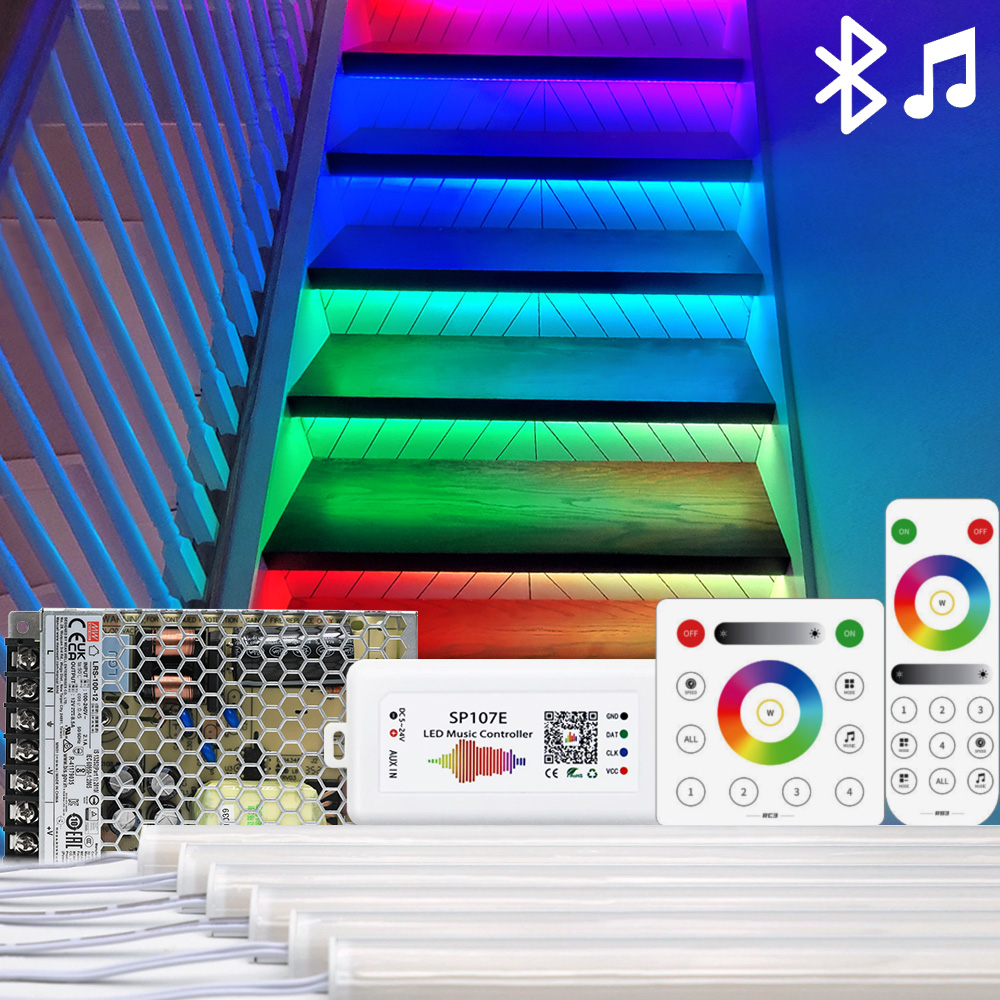
 (0)
(0)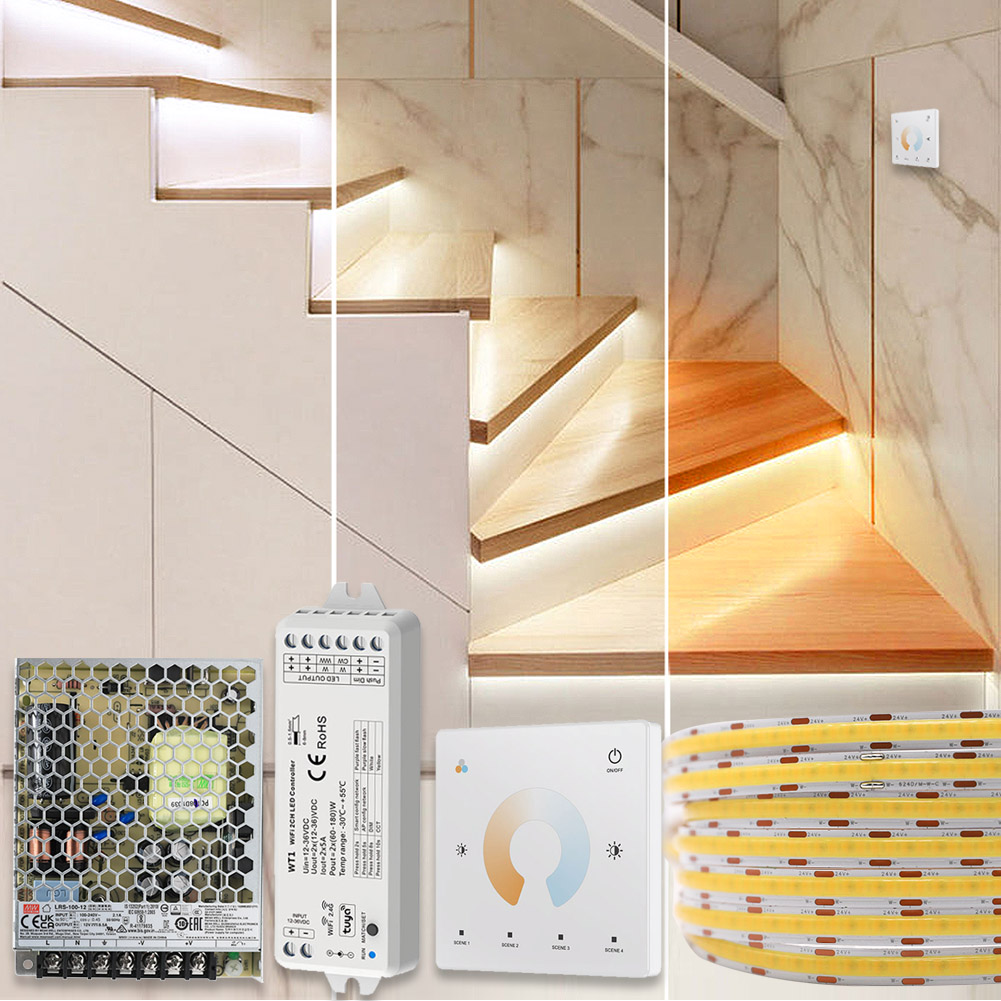


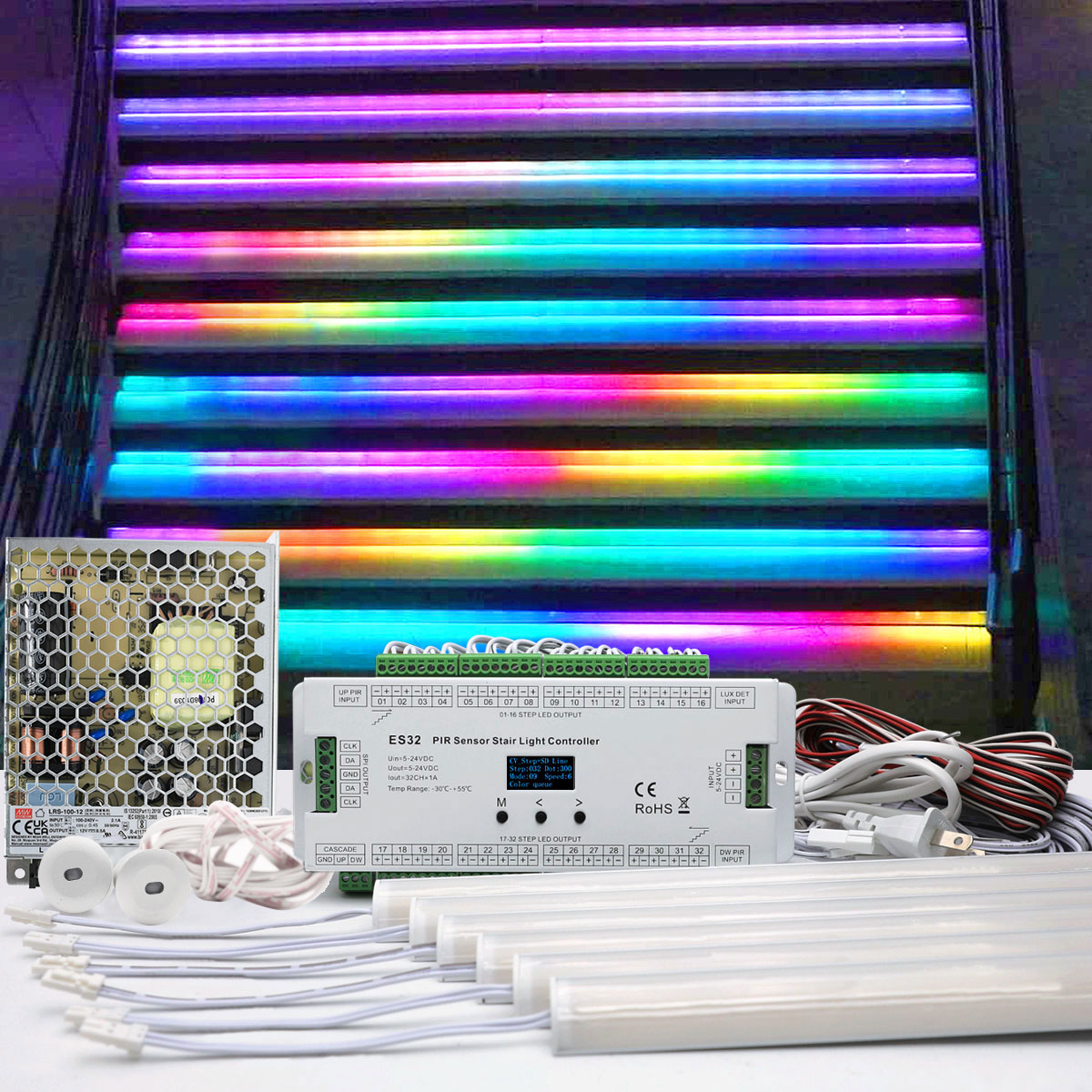
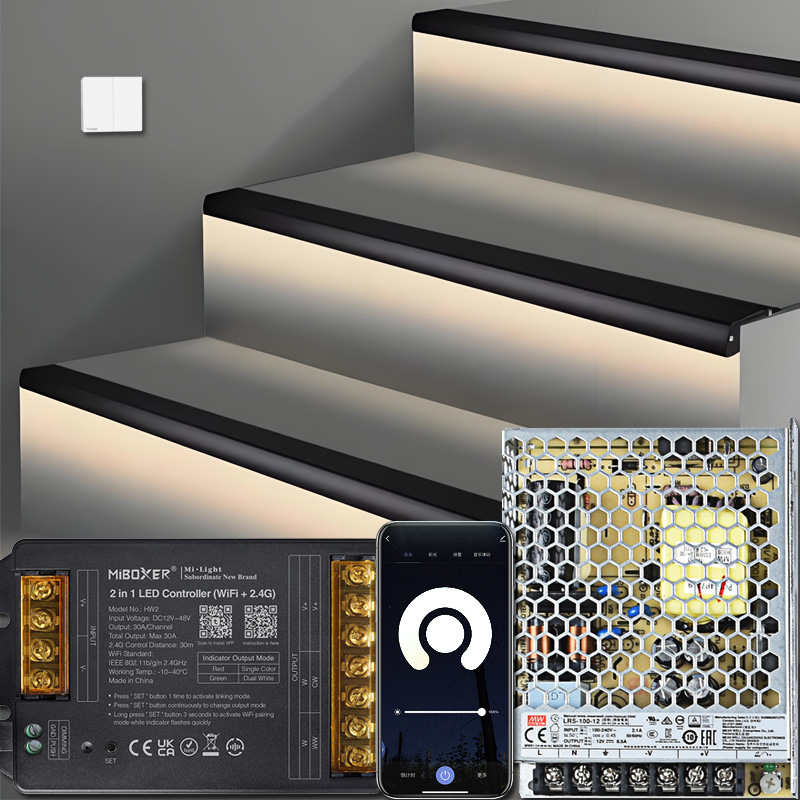
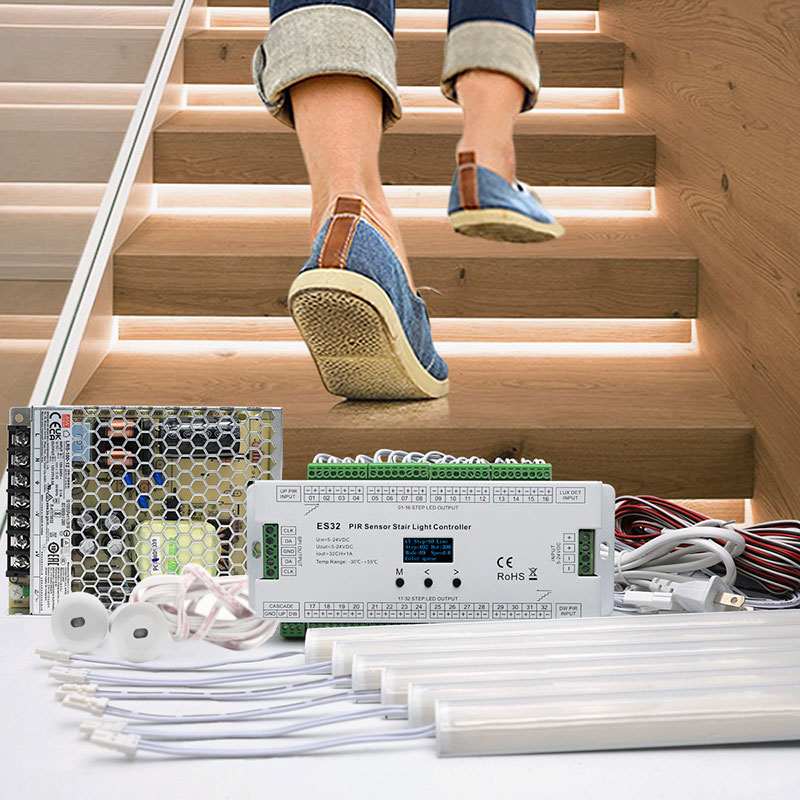
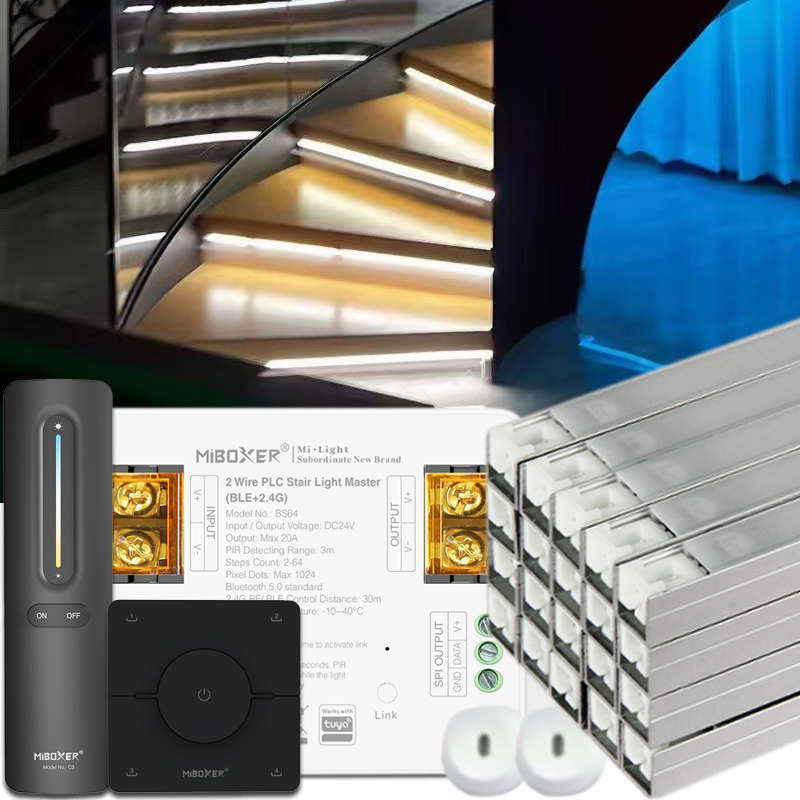

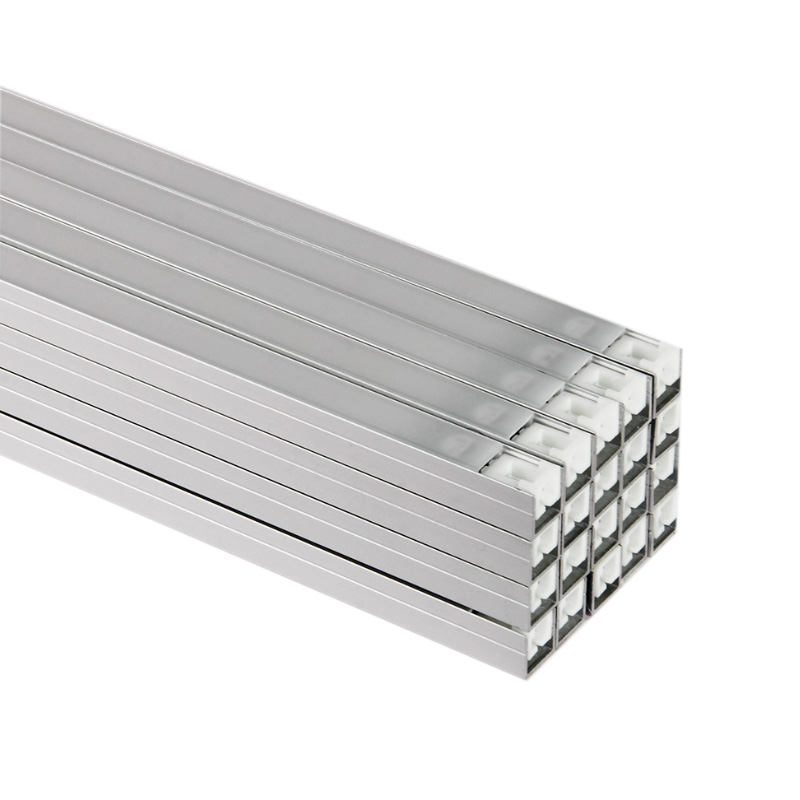

-5-to-24VDC-Dual-Push-Button-Tuya-WiFi-LED-SPI-Controller.jpg)
-SPI-WiFi-PIR-Sensor-Addressable-LED-Strip-Controller.jpg)
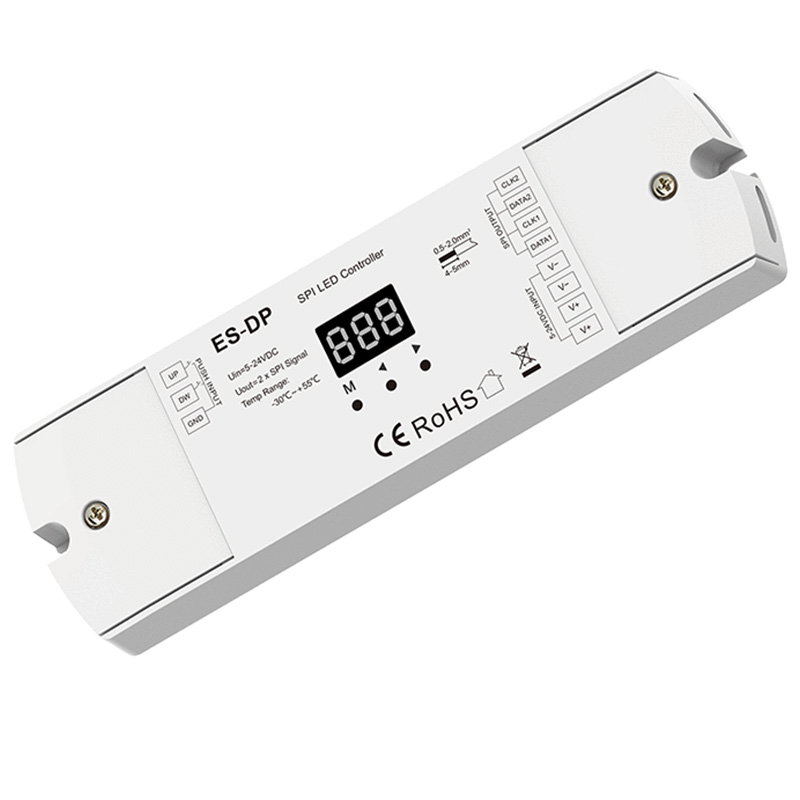
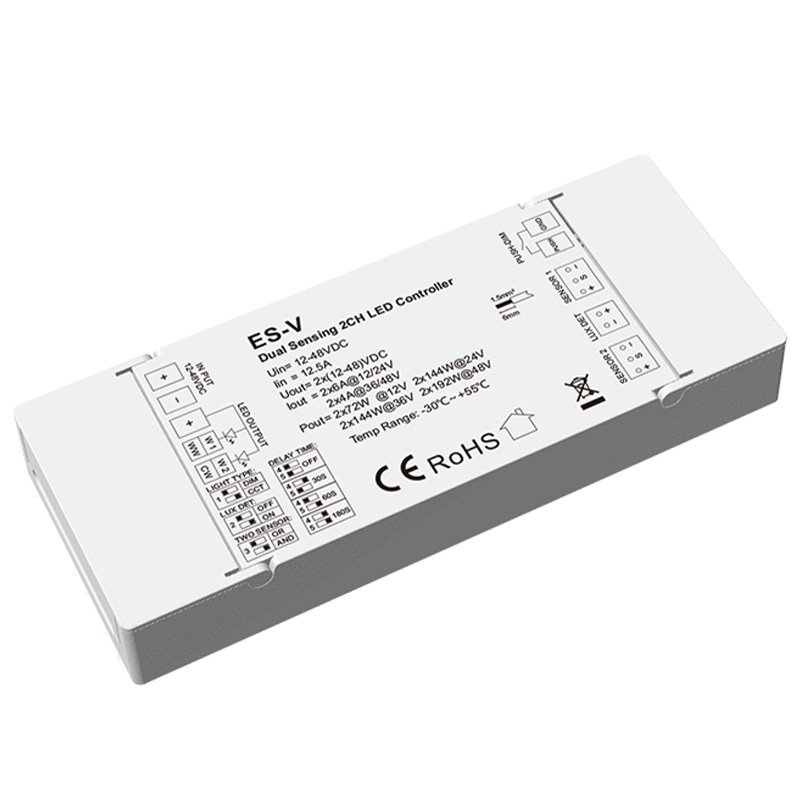
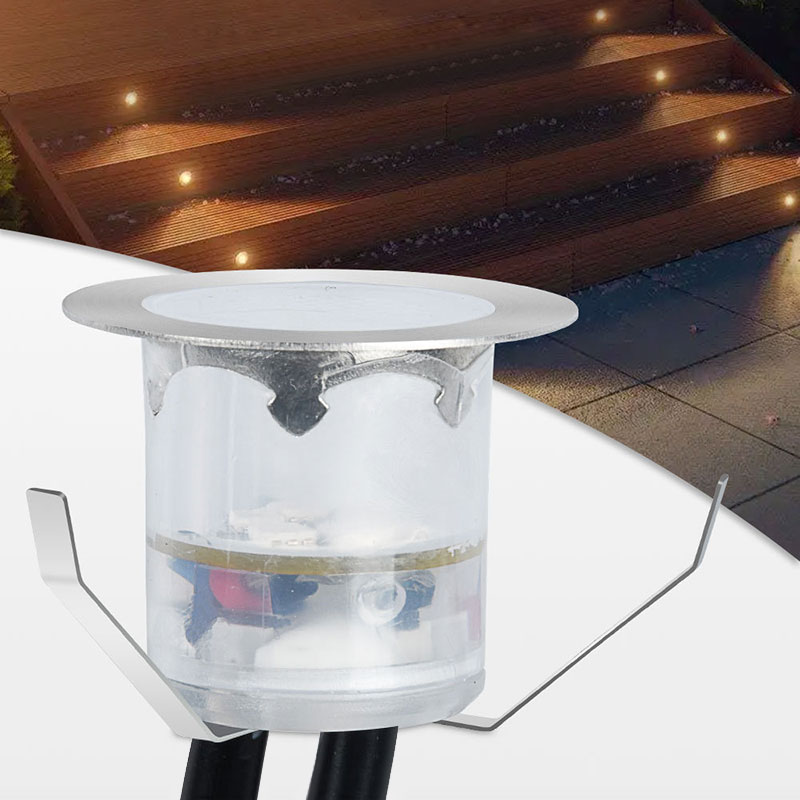
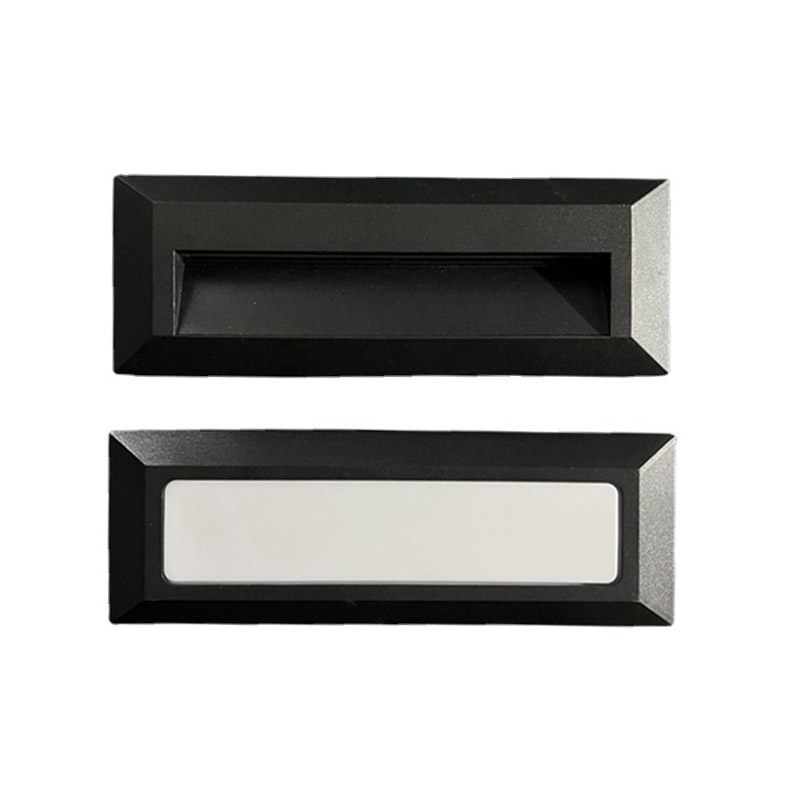
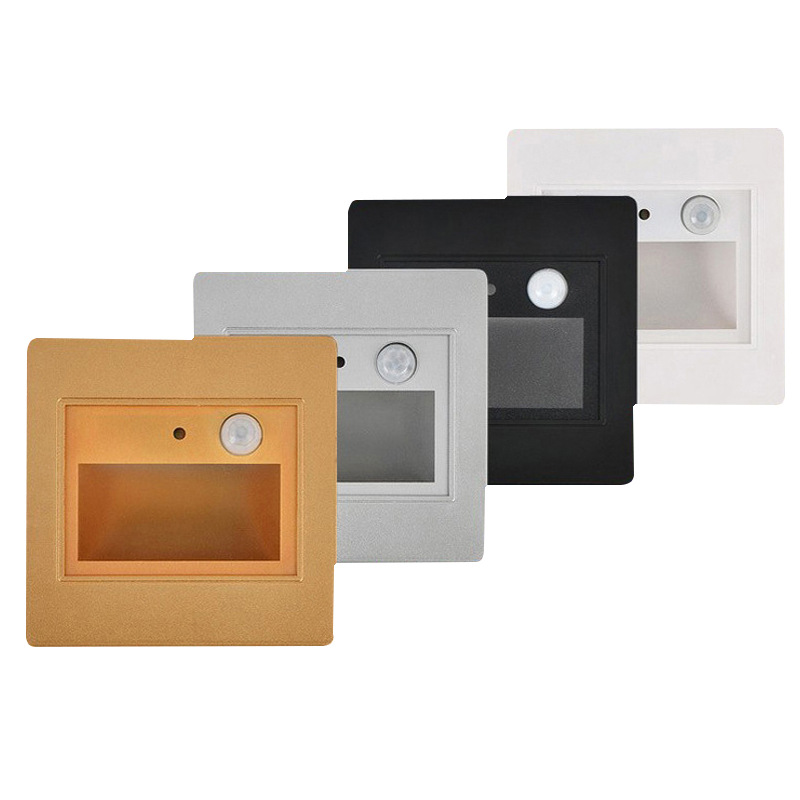
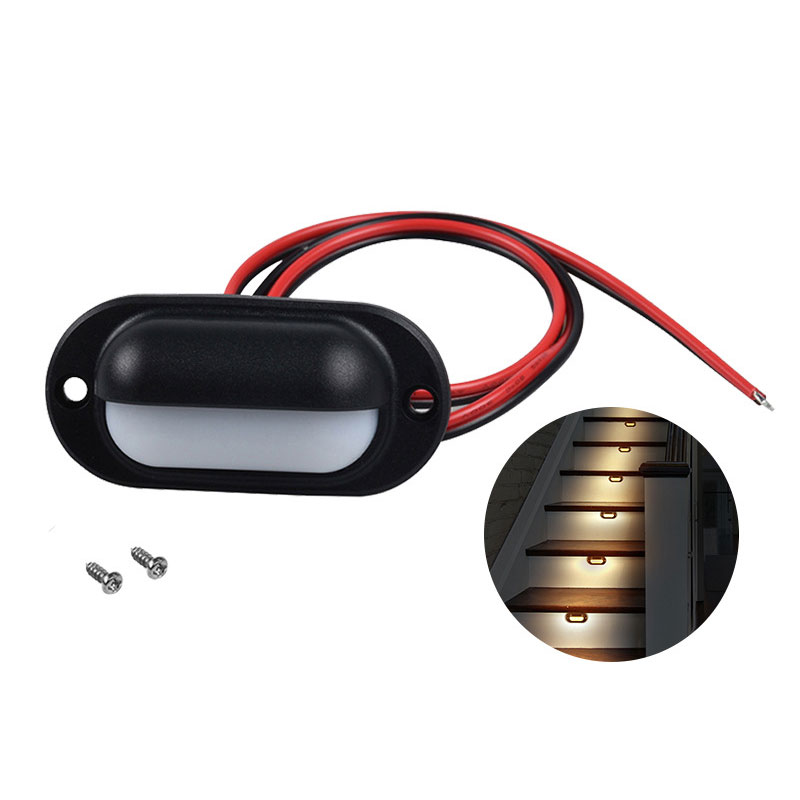
 (1)
(1)